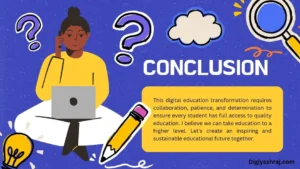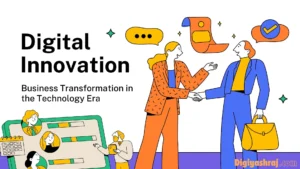Digital revolutionizing in education
Enhancing the educational opportunities for children in rural or Rural areas has been a longstanding challenge. While education has traditionally been limited due to infrastructural economic and geographical barriers, technological advancements now offer an unprecedented opportunity to bridge these gaps. Integrating technology into rural education can empower children with knowledge skills and confidence to shape their futures.
Technological Solutions for Rural Areas
Digital Classrooms Equipping schools with digital devices such as tablets or computers allows students to access various educational content. Interactive software can aid learning in subjects like mathematics and languages.
E-learning Platforms: Online learning platforms provide access to lectures, tutorials, and practice exercises digital revolutionizing in education.
Mobile Learning: Given the high penetration of mobile phones in rural areas, mobile learning apps can be a practical way to deliver educational content directly to students’ devices.
Offline Solutions
Where internet access is limited, offline resources such as pre-loaded content on USB drives or SD cards can be distributed to students and teachers.
Remote Teaching: Video conferencing tools can connect rural students with urban teachers and experts, offering access to high-quality education. Digital revolutionizing in education social media accounts

Benefits of Technology in Rural Education
Improved Quality of Education: Access to a broader range of educational materials and resources can enhance the quality of education in Rural area areas.
Personalized Learning: Technology allows for customized learning experiences tailored to each student’s pace and interests.
Bridging the Urban-Rural Gap: Technology can help level the playing field by offering rural students similar opportunities as their urban counterparts.
Digital revolutionizing in education Students develop digital literacy skills that prepare them for the future job market and ongoing learning opportunities.
Community Development An educated population contributes to the overall development of rural areas, including economic and social progress.
Technology offers immense potential to transform rural education by making quality learning accessible to children in Rural area areas. Through strategic planning, investment in infrastructure, and community engagement, technology can pave the way for an equitable education system that empowers rural children to reach their full potential
Investment in Infrastructure: Governments and private entities should invest in infrastructure, including electricity and internet connectivity, to facilitate the implementation of technology in rural education .Digital revolutionizing in education

Innovation and Adaptation Continuous innovation in educational technology is essential to address the unique challenges faced in Rural area areas.
Ongoing Training and Support Continuous training and support for teachers and students will ensure the successful adoption of technology-based education.
Community Engagement Involving local communities in planning and decision-making will ensure that technology aligns with their needs and values.
Regular assessment of technology-based programs can help identify successes and areas for improvement.
Conclusions

In simple terms, technology can help improve education in rural areas. With proper planning, building things like internet connections and computers, and involving the community, technology can make sure kids in rural areas get a good education. Digital revolutionizing in education This means they’ll have the same chances as kids in cities. Also, using technology in education can help rural communities grow, improve their economy, and get students ready for the future. Digital revolution in education









